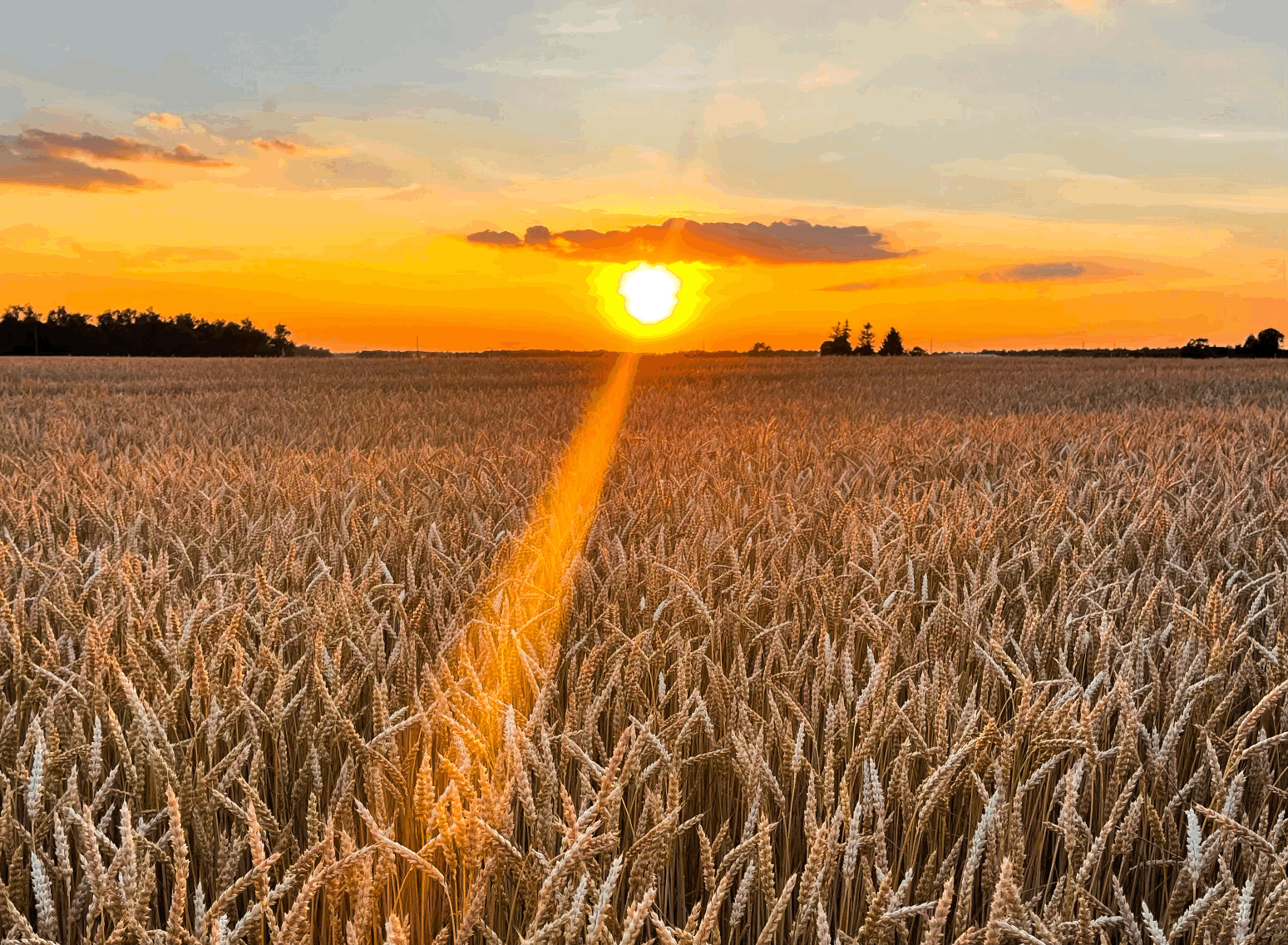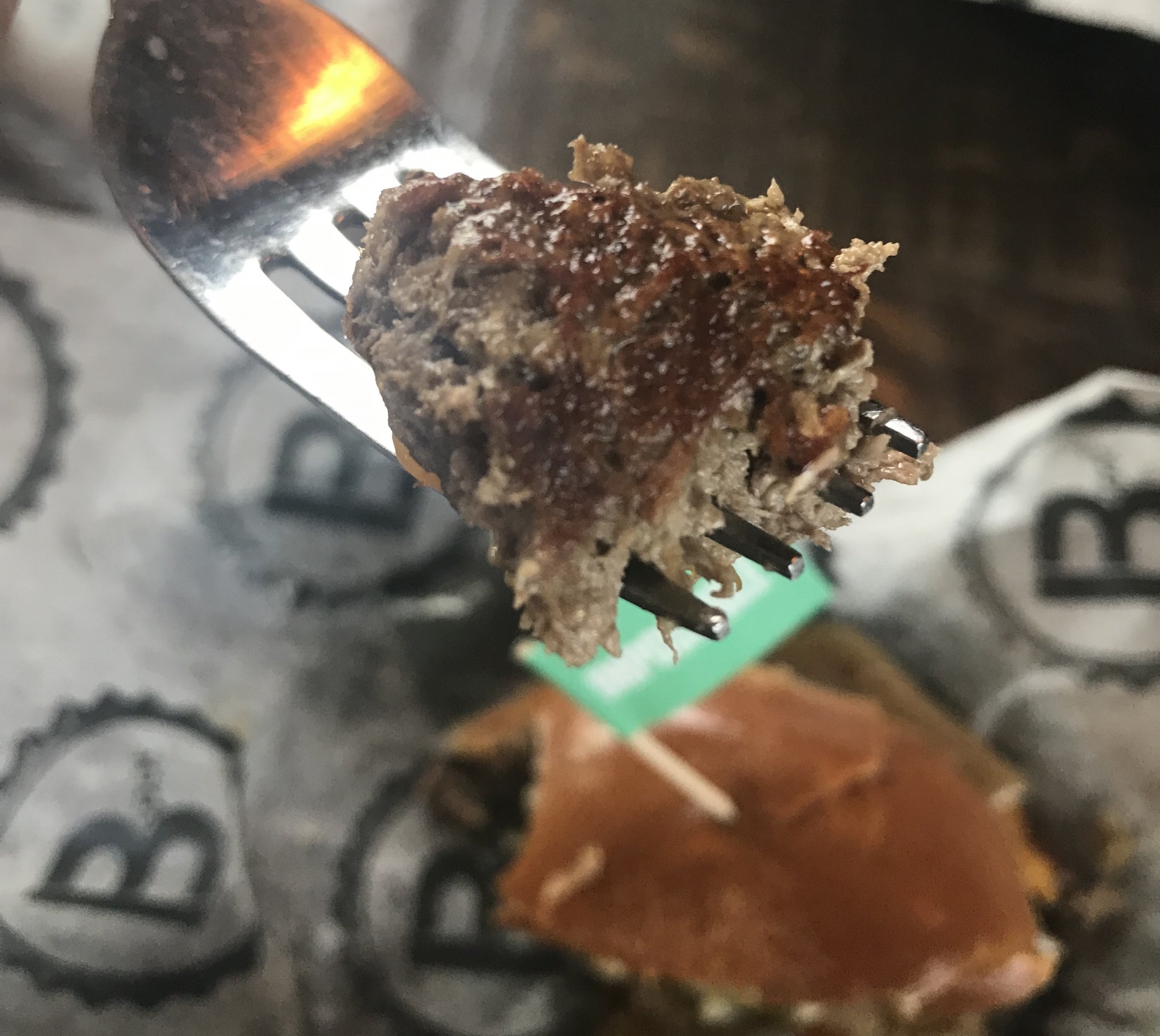Taste-Testing Fake Meat
/After reading several recent stories about various meat substitution products, we decided to find out for themselves what the fuss was all about. If fake meat was going to pose a market challenge to farmers, better to know about it and meet the challenge head on. We went to a local burger joint to do a side-by-side taste comparison of a “real burger” and an “Impossible Burger.”
Looks TASTY.
Surprisingly meat-like texture.
The Impossible Burger is made of wheat, coconut, potatoes, soy, and heme (an iron molecule the maker of the burger creates by extracting a soybean protein gene and transferring it to yeast to ferment). We ordered two burgers--both with cheese, grilled onions, dill pickles, and mayo. One was the Impossible Burger, one was a traditional beef burger made with a 90/10 blend of sirloin, chuck, and brisket. We videoed our taste-test so that we could not hide our reactions. Click the video below to see the results:
Taste wasn't bad. But what about other considerations?
Health. Red meat is high in protein, but can pose a dietary problem for some people since it also can be high in fat and cholesterol. The Impossible Burger isn't necessarily a healthier choice. It contains no cholesterol, but fat and calories are similar to hamburger. According to the Impossible Burger website, a 3-ounce patty contains 220 calories, 13 grams of fat (10 grams of saturated fat), zero cholesterol, and 20 grams of protein. Our server explained the burgers are cooked differently: the real meat burger is cooked over an open flame grill, while the Impossible Burger is cooked on the flat top because it falls apart when grilled. Of course, what you put on the burger probably matters more than the choice of meat if you are worried about calories. Since both of our burgers were slathered in mayo, grilled onions, and cheese, this probably offset the taste differences and minimized health differences.
Price. The Impossible Burger sold for $9.99. The regular burger at B-Spot sold for $8.99. Comparable enough at a gourmet burger joint, but could McDonald's sell the Impossible burger at the same price as a Quarter Pounder?
Green-House-Gas (GHG) Emissions. Is the Impossible Burger better for the environment? The website claims "one Impossible Burger uses about one quarter of the water, 5% of the land and contributes 13% of the emissions compared to a burger made from cows." We cannot verify these claims, but we will point out that the website also claims that livestock industry is responsible for about 15% of the GHG emissions worldwide. This number is very controversial. A recent study placed this number at 2.6% because it said most examinations of GHG emissions in livestock fail to account for the land and cultivation needed to replace meat with plant-based alternatives. And there is a lot of land in the world where one could not grow Impossible burgers but one could graze cattle.
All Natural. One could argue that a beef patty is more "natural" than an Impossible Burger. The key ingredient in Impossible Burger meat is "heme," a plant protein produced by genetically modified yeast. Other ingredients are: Water, Coconut Oil, Potato Protein, Natural Flavors, 2% or less of: Leghemoglobin (soy), Yeast Extract, Salt, Soy Protein Isolate, Konjac Gum, Xanthan Gum, Vitamin C, Thiamin (Vitamin B1), Zinc, Niacin, Vitamin B6, Riboflavin (Vitamin B2), Vitamin B12. Not your normal veggie burger, and definitely not your normal meat burger.
Conclusion. The Impossible Burger is surprising good-tasting if you are used to eating red meat (like us). For people who cannot eat red meat--for whatever the reason--it offers a good alternative. And though our hearts still lie with livestock farmers, the main ingredients are derived from wheat and soy, and we support these farmers too.








